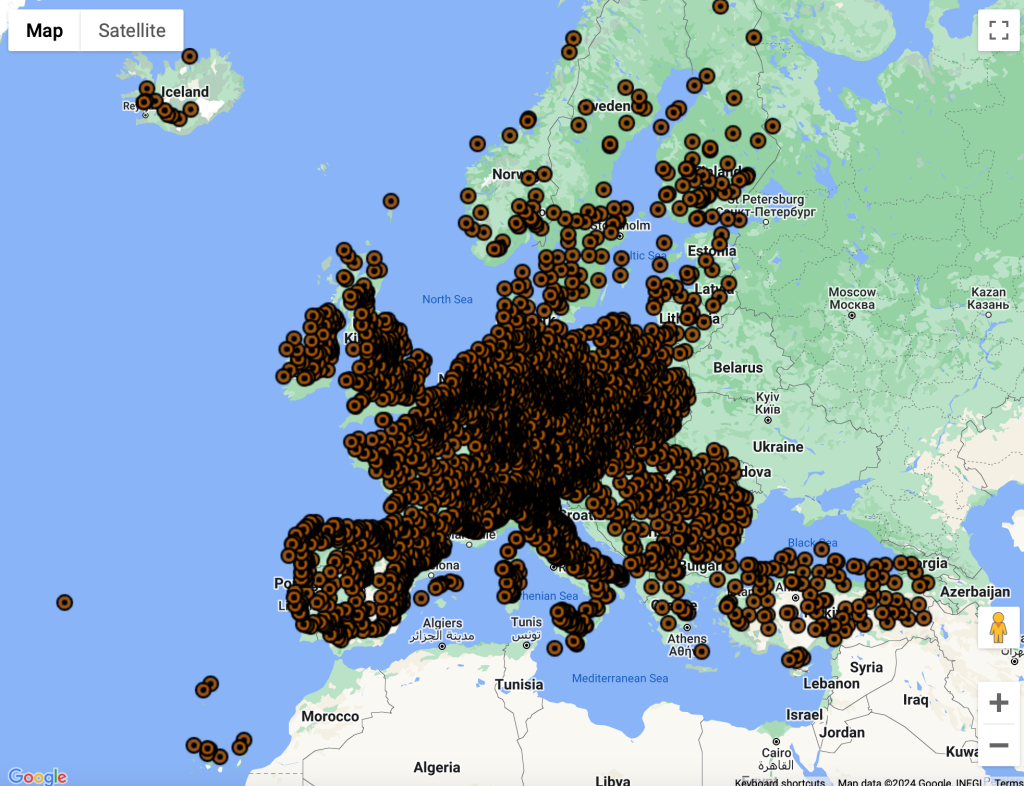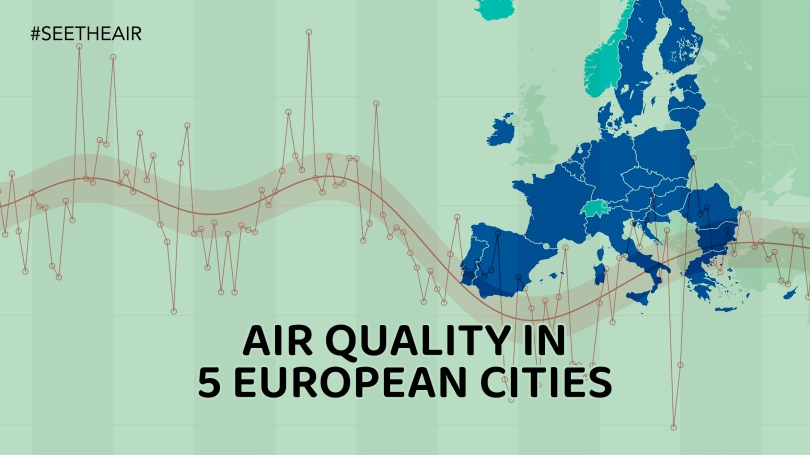European cities are showing significant progress in combating air pollution, according to data collected from active official traffic air quality stations. There are positive trends which translate to cleaner air for residents, with reductions in harmful pollutants like PM2.5 and NO2. This article explores the known strategies that these cities have implemented to achieve such remarkable improvements, offering valuable insights for other urban centers striving for a healthier future.
These are the 5 cities and traffic air quality stations that I have analyzed data from.
- Berlin DEBE068 (B Mitte, Brückenstraße)
- Madrid ES0118A (Escuela Aguirre)
- Rome IT1906A (Arenula)
- Paris FR04012 (Place Victor Basch)
- Athens GR0003A (Aristotelous)

For almost all European cities I had a hard time finding a traffic station with both NO2 and PM2.5 data and most of the AQ stations you can see on the map are inactive.
COVID-19 lockdowns are noticeable across all European cities but unfortunately, levels came back to “normal” after a while.
🇩🇪Berlin DEBE068 (B Mitte, Brückenstraße)
We can see a clear path of decrease for nitrogen dioxide concentration from approximately 29 μg/m3 to 17 μg/m3, which is a clear win. I don’t have enough PM2.5 measurements to come to a conclusion but it seems stable for the last 3 years with concentrations around 20 μg/m3. One of measures aimed to reduce pollutant emissions across the city by modernizing the fleet of buses and municipal vehicles.


🇪🇸Madrid ES0118A (Escuela Aguirre)
Nitrogen dioxide concentrations in Madrid are weird but eventually, they have decreased to levels around 32 μg/m3. PM2.5 concentrations are still above WHO AQ Guidelines and the new European limits. We can see some anomalies that I think are related to fires. Madrid low emission zone has had a positive impact on reducing NO2 emissions since 2019.


🇮🇹Rome IT1906A (Arenula)
No PM2.5 data for Rome. I couldn’t find a station with both pollutants, but NO2 has significantly decreased over the years. Rome is limiting vehicle use in hopes of pushing pollution levels down since 2021.

🇫🇷Paris FR04012 (Place Victor Basch)
Paris has done a good job driving the NO2 concentrations down. From 80 μg/m3 down to 35 μg/m3. However, PM2.5 is significantly higher than in other European cities. They surpass both WHO and EU limits.
Paris is one of the European cities with low emission zone to the Greater Metropolis starting in 2019 and this commitment has achieved cleaner and healthier streets. It is unknown to me why PM2.5 are high though in the area of Place Victor Basch.


🇬🇷Athens GR0003A (Aristotelous)
Little to no efforts in Greece for both pollutants and although COVID-19 helped, Greek people don’t appreciate clean air yet. NO2 is a bit better but this is normal as new vehicles are getting better. Finally, government efforts are nowhere to be seen.


Epilogue
Hopefully, the new requirements and limits from the EU Parliament and Commission will motivate countries and cities to comply because lots of lives are at stake. Approximately, 238,000 air pollution-related deaths could be avoided each year if the EU27 countries met WHO 2021 AQ Guidelines.
Discover more from See The Air
Subscribe to get the latest posts to your email.


Thanks for sharing this! Do you have information on interventions these cities made to reduce pollution or reduce traffic congestion?
LikeLike
Hi Sarah, I have mentioned some that I was aware of. 1. Electrification of public transport, 2. Low-Emissions Zones, and 3. Better Emission Standards like EURO 6 are the main reasons for better air quality in these areas.
LikeLike